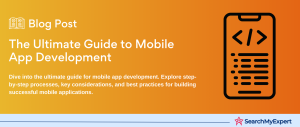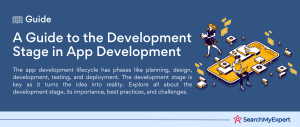Swift, Apple’s brainchild, has revolutionized the way developers approach iOS development. Its inception in 2014 marked a significant shift from the previously used Objective-C. With its modern syntax, Swift promises not only efficiency but also a more straightforward and enjoyable coding experience.
For those unfamiliar, iOS is Apple’s mobile operating system used in its range of devices, from iPhones to iPads. Developing for this platform requires a unique set of tools and knowledge, with Swift being at the forefront.
Why Choose Swift for iOS Development?
Performance
Swift’s performance is one of its standout features. When compared to Objective-C, Swift often outperforms, especially in complex object sort and iterations. This high performance ensures that apps run smoothly, enhancing the user experience.
Safety and Stability
Swift’s design prioritizes code stability. Its syntax encourages developers to write clean and consistent code, which reduces the potential for errors. The type system prevents unintended null references, a common issue in many programming languages.
Modern Syntax
Swift’s syntax is expressive yet concise. This clarity makes the code more readable, reducing the time developers spend understanding and revising code. For instance, a string interpolation in Swift allows for easier and more intuitive string manipulation.
Open Source
In 2015, Apple took a significant step by making Swift open-source. This move allowed a community of developers to contribute and improve the language. The open-source nature also means that Swift can be used beyond Apple’s ecosystem, broadening its reach and versatility.
For those interested in the evolution and advantages of Swift, our detailed article provides a comprehensive overview.
Setting Up Your Development Environment
Downloading and Installing Xcode
Xcode is more than just an IDE; it’s a complete suite of tools designed for Apple software development. Available on the Mac App Store, Xcode is regularly updated to include the latest features and improvements.
iOS Simulator
The iOS Simulator is a boon for developers. It simulates various Apple devices, from different iPhone models to iPads. This tool is invaluable for testing how apps run on different devices without needing the physical device.
Interface Familiarization
Xcode, while powerful, can be daunting for newcomers. It’s essential to familiarize yourself with its various panels, views, and settings. Spend time understanding the Interface Builder, the Project Navigator, and the Attributes Inspector. The more comfortable you are with the environment, the smoother your development process will be.
Writing Your First Swift Program
The tradition of starting with a “Hello, World!” program is not just about tradition; it’s about understanding the basic structure of a new language. In Swift, this simple program serves as an introduction to its syntax and structure.
When executed, this program displays the message “Hello, World!” It’s a simple demonstration, but it’s the starting point for every aspiring Swift developer.
Delving Deeper: Swift Basics
Variables and Constants
In Swift, variables are mutable, meaning their values can change. They’re declared using the var keyword. On the other hand, constants, declared with the let keyword, are immutable. Once assigned a value, it cannot change. This distinction ensures code clarity and reduces potential errors.
Data Types
Swift has a strong type system. It includes:
- Int for integers
- Double and Float for floating-point numbers
- String for textual data
- Bool for Boolean values (true or false)
Swift also introduces type inference. This means that if you assign a value to a variable or constant, Swift can infer the type, reducing the need for explicit type declarations.
Control Flow
Control flow in Swift is achieved using conditional statements and loops. The if, else, and switch statements allow for conditions to dictate code execution. Loops, such as for-in, while, and repeat-while, enable repetitive tasks.
Functions
Functions are fundamental in Swift. They encapsulate code into reusable blocks. Swift functions can have multiple parameters and return values. They can even return multiple values using tuples.
Building Your First iOS App
Project Creation
Starting a new project in Xcode is straightforward. Upon opening Xcode, select “Create a new Xcode project.” For beginners, the “Single View App” template is recommended. This template provides a clean slate to start building your app.
Designing the Interface
The Interface Builder in Xcode is a visual tool for designing your app’s user interface. You can drag and drop elements, such as buttons, labels, and images, onto your app’s screen. Each of these elements, called views, can be customized in terms of size, color, and position.
Adding Functionality
Once the interface is designed, the next step is to add functionality. This is where Swift comes into play. By connecting your interface elements to Swift code, you can dictate what happens when, for instance, a button is pressed.
Testing
After designing your app and adding functionality, it’s crucial to test it. The iOS Simulator allows you to see how your app will run on different devices. Testing ensures that your app works as intended and helps you catch any bugs or issues.
Advanced Swift Features
Swift is not just for beginners; it has a range of advanced features that cater to experienced developers.
Options
Optional in Swift address the absence of a value. An optional represents two possibilities: either there is a value, and it equals x, or there isn’t a value at all.
Error Handling
Errors are a part of every development process. Swift’s error-handling model is robust, allowing developers to catch and handle errors gracefully using try, catch, throw, and do statements.
Extensions and Protocols
Extensions allow developers to add new functionality to existing classes, structures, or enumeration types. Protocols, on the other hand, define a blueprint of methods, properties, and other requirements for a particular task.
Integrating Advanced iOS Features
Apple’s iOS offers a plethora of features that can significantly enhance your app’s functionality and user experience.
- User Authentication: Secure your app by allowing users to log in using various methods, from email/password combinations to biometric authentication.
- Push Notifications: Engage users by sending them timely notifications about updates, news, or other relevant content.
- In-App Purchases: Offer additional content, features, or digital goods for purchase within your app.
Swift Package Manager
The Swift Package Manager is a tool for managing the distribution of Swift code. It’s integrated with the Swift build system to automate the process of downloading, compiling, and linking dependencies.
Why Use Swift Package Manager?
- Simplicity: Easily define your dependencies in a Package.swift file and the package manager handles the rest.
- Integrated with Xcode: Starting from Xcode 11, the Swift Package Manager is fully integrated, making it easier to add libraries and frameworks to your projects.
For a deeper understanding of the Swift Package Manager, our comprehensive guide provides insights and best practices.
Advanced UI/UX Design Principles for iOS
Creating an app isn’t just about functionality; it’s also about the user experience. Apple’s design principles emphasize simplicity, elegance, and a focus on content.
Key Design Principles:
- Clarity: Text is legible at every size, icons are precise and lucid, and adornments are subtle and appropriate.
- Deference: The UI helps users understand and interact with the content, but never competes with it.
- Depth: Visual layers and realistic motion impart vitality and heighten users’ delight and understanding.
For those looking to master iOS design, Apple’s Human Interface Guidelines is an invaluable resource.
Model-View-Controller (MVC) in iOS
MVC is a design pattern used in software engineering aimed at separating an application into three interconnected components:
- Model: Represents the data and the business rules of the application.
- View: Represents the UI of the application.
- Controller: Acts as an interface between Model and View.
In iOS, MVC ensures that the business logic, user interface, and user input are separated into different sections of the codebase, making it cleaner and more manageable.
Debugging and Profiling in Xcode
No matter how experienced a developer is, bugs are an inevitable part of the development process. Xcode provides a suite of tools to help identify, diagnose, and fix bugs.
Instruments:
Instruments is a powerful performance analysis and testing tool that’s part of Xcode. It provides a visual interface to help developers identify performance bottlenecks, memory leaks, and other issues.
LLDB Debugger:
LLDB is the default debugger in Xcode. It provides functionalities like inspecting the value of variables, controlling the execution of programs, and more.
Integrating with Apple Services
Apple offers a range of services that developers can integrate into their apps:
- iCloud: Store your app’s data in Apple’s cloud service, ensuring it’s available across all devices.
- Apple Pay: Provide users with a secure and private way to pay using their Apple devices.
- Core ML: Integrate machine learning models into your app, enhancing its capabilities.
For a detailed exploration of Apple’s services and how to integrate them, our iOS platform guide is a must-read.
Staying Updated with Swift Evolution
Swift is a rapidly evolving language. Apple and the open-source community are continuously working on improvements, new features, and optimizations. It’s crucial for developers to stay updated with these changes to leverage the latest features and ensure compatibility.
Key Resources:
- Swift.org: The official website for Swift provides a wealth of resources, including documentation, tutorials, and the latest news.
- Swift Forums: Engage with the community, ask questions, and stay updated with the latest discussions on Swift’s evolution.
Here is the Guide Showing
Getting Started with Swift: A Beginner’s Guide to iOS Development
| Topic/Section | Summary |
|---|---|
| Introduction to Swift and iOS Development | Overview of Swift’s origin and its role in iOS development. |
| Why Choose Swift for iOS Development? | Benefits of Swift, including performance, safety, modern syntax, and open-source nature. |
| Setting Up Your Development Environment | Introduction to Xcode, iOS Simulator, and familiarizing with the interface. |
| Writing Your First Swift Program | A basic introduction to Swift syntax using the “Hello, World!” program. |
| Delving Deeper: Swift Basics | A dive into Swift’s core concepts like variables, data types, control flow, and functions. |
| Building Your First iOS App | Steps to create, design, add functionality, and test an iOS app. |
| Advanced Swift Features | Introduction to advanced Swift concepts like optionals, error handling, and protocols. |
| Integrating Advanced iOS Features | Incorporating iOS-specific features like iCloud, Apple Pay, and Core ML in apps. |
| Swift Package Manager | An overview of managing Swift code distribution using the Swift Package Manager. |
| Advanced UI/UX Design Principles for iOS | Key design principles to enhance user experience in iOS apps. |
| Model-View-Controller (MVC) in iOS | Understanding the MVC design pattern in the context of iOS development. |
| Debugging and Profiling in Xcode | Tools and techniques to identify and fix bugs in Xcode. |
| Integrating with Apple Services | Incorporating various Apple services into iOS apps for enhanced functionality. |
| Staying Updated with Swift Evolution | Resources and practices to stay updated with the latest in Swift development. |
Conclusion
Embarking on the journey of iOS development with Swift is an exciting endeavor. With its modern syntax, robust performance, and abundant resources, Swift ensures that developers are well-equipped to build innovative and efficient iOS apps. As the landscape of mobile development continues to evolve, Swift stands as a beacon for quality, efficiency, and innovation.
Catalyze Change with these visionary Mobile App Developers.
Table of Contents
Toggle






